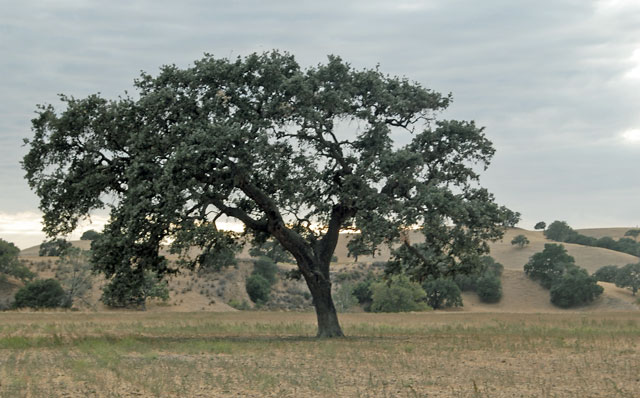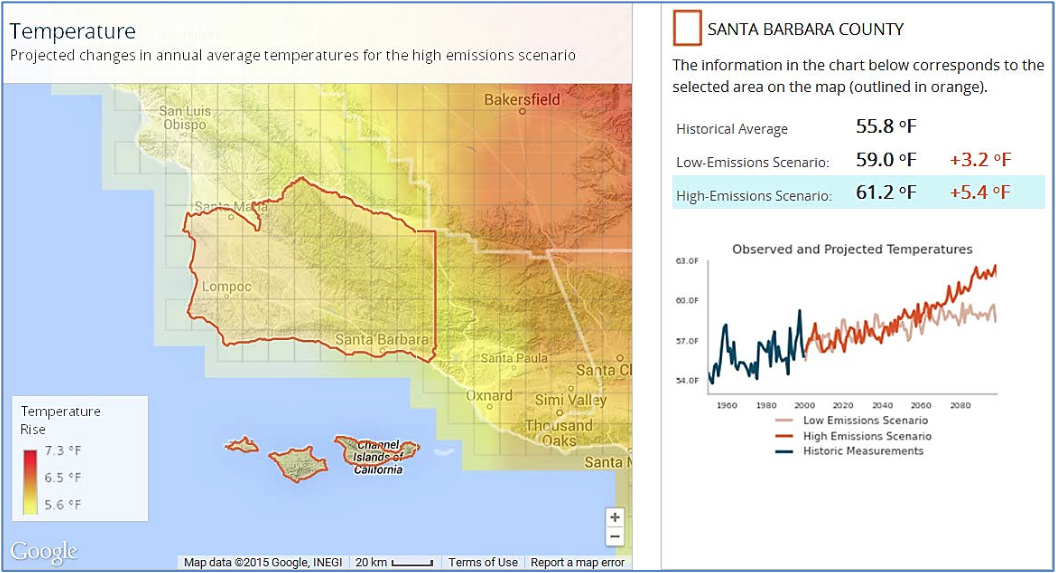Doom and Gloom Report Looks at Climate Change
Effects on Populations and Health Studied for Santa Barbara County

The good news is that Santa Barbara County has programs in place that address food insecurity and care for seniors, but the bad news is that climate change will make them more needed than ever. Doom and gloom dominate a new California Public Health study on the social ills that the changing climate will bring on. By the end of the century, it recounts, temperatures will rise by 3.2 degrees Fahrenheit in the happiest scenario and by 5.4 degrees Fahrenheit in Santa Barbara County in the worst. The social disruptions caused by increased heat and water issues will most affect those who are isolated — either by language or a lack of transportation — or made vulnerable by extreme youth or age or illness.
And it’s irreversible now, says the study. The longevity of carbon dioxide, methane, and other pollutants trapped in the atmosphere means the effects from rising ocean and air temperatures are long-term. Carbon dioxide hit a high in 2013 unrecorded in the previous 650,000 years. The happier outlook sees world economies cutting back on fossil fuel use and populations leveling off after 2050. But, if greenhouse gases continue to turn up the heat, a 6.1 degree Fahrenheit rise worldwide would generate even greater storms and poorer food production. Humanity will suffer.

The environmental group 350.org has compiled a list that raises hope, however, of a leveling off. Collecting news reports from around the world, the group states that global carbon emissions have been flat since 2014, with both China and India cancelling coal plants in favor of renewable energy projects. The International Energy Agency stated U.S. CO2 emissions were down 3 percent in 2016 — the lowest level since 1992 — down one percent in China, and stable in Europe, conditions that offset increases in other parts of the world.
In March, Reuters reported that China halted over $62 billion worth of coal projects throughout the country that were to produce 100 gigawatts of power. The country is on track to beat the pledges made with President Obama in 2014, according to ThinkProgress.org, adding 130 gigawatts of solar and wind energy generators by 2020. That investment of $360 billion is expected to employ 13 million people. In India, reports the U.K. Independent, 14 gigagwatts of coal-fired power was cancelled, with solar prices so low they beat out coal.
But one of the unavoidable effects of the inevitably warming ocean is sea level rise, according to the Public Health report, estimated to be 66 inches along California’s coast. Salt water intrusion into coastal aquifers is forecast, as is mold contamination in water-soaked buildings and a loss of recreation along the coast, with hazards left behind. The grim news continues as the study predicts an increase in violent crime, wildfires, and storms, and that the consequent effects on roads and power transmission lines will not be good for people’s health. It urges agencies to put in place now the strategies needed for the expected heat- and particulate-related diseases, allergies, and stress or depression likely to result from people dealing with ruined schools, housing, and businesses.
By the numbers, about 13 percent of Santa Barbara County residents lived in moderate to very high severity wildfire zones in 2010. About 5,000 people lived in sea level rise zones. In 2012, 40 percent of adults had chronic health conditions, such as diabetes, heart disease, or severe mental stress, and about 12 percent had asthma. About 7 percent of households in 2010 lacked a vehicle in which to evacuate; 8 percent had no one over the age of 14 who spoke English; 14 percent in the county were below the poverty level. Among the employed, 21,565 people worked in occupations that increased their risk of sickness due to heat. Surprisingly, trees — essential for cooling shade and the carbon-oxygen exchange — covered only 6 percent of the county’s acreage compared to a statewide 8 percent.
Social resilience is a saving grace in times of natural disaster, according to the Public Health study. Relationships, networks, trust, and mutual aid contribute to that resilience, a factor perhaps made tangible in voter participation. In Santa Barbara County, 67 percent of registered voters, compared to 58 percent statewide, cast a ballot in 2010.
While the current crop of national leaders prefers to rewrite recent history when it comes to climate change — with the exception of the CIA, whose Center for Climate and Security views it as an existential threat — in Santa Barbara County, the Public Health Department has been working with county supervisors on programs to keep the community healthy. Other county programs, like the Energy and Climate Action Plan, provide a guide to residents in reducing greenhouse gases.



